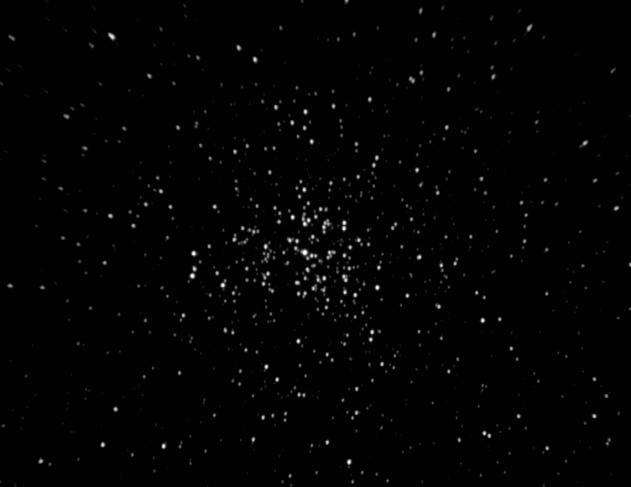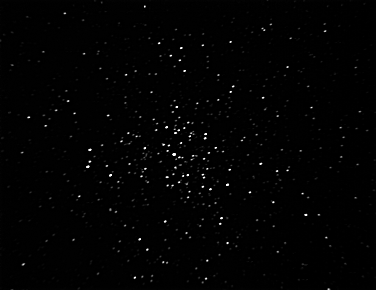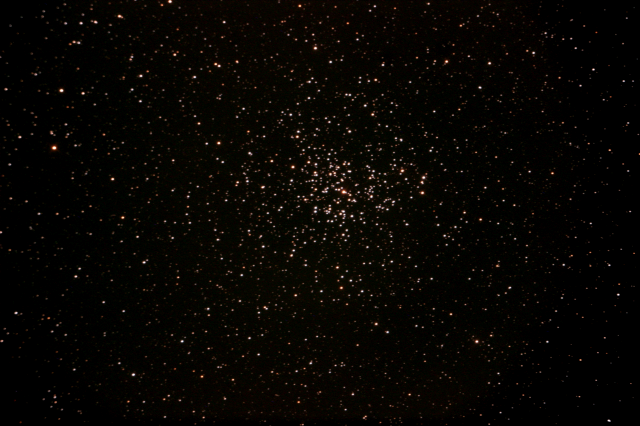M37 
M37, in the constellation of Auriga,was first observed by Giovanni Batista Hodierna sometime prior to 1654 but his work remained obscure until uncovered in 1984. It was missed by Le Gentil at the time he rediscovered M36 and M38, but was rediscovered by Charles Messier in 1764 and included in his catalogue on 2nd September. It is between 3,600 and 4,700 light-years away and is between 20 and 25 light-years across. It appears to be about 300 million years old, and contains at least 150 stars of which a dozen are red giants.
 |
M37 captured with my ETX125 fitted with a focal reducer. The diameter of the cluster is about 24 minutes of arc. The cluster as a whole has a visual magnitude of 5.6.
Date and Time: 15th November 2010 03.52 UT
Camera: Starlight Xpress MX716
Telescope: ETX125 with 0.33 focal reducer and Astronomik CLS filter
Capture: Star_mx7. Exposure 30 sec.
Processing: Star_mx7: Enhancement factor 25
RegiStax: 10 frames stacked, gamma 1.5, histogram 10-240
|
 |
This picture of M37 was captured with my Ritchey-Chrétien telescope fitted with the Meade 0.33 focal reducer as part of my testing of that combination. The focal length is 720 mm, compared to 630 in the picture above. So the scale would be about the same except that I used the MX716 in its low-resolution mode which halves the scale.
Date and Time: 8th October 2015 04.52 to 05.15 UT
Camera: Starlight Xpress MX716
Telescope: 8-inch RC fitted with 0.33 focal reducer (operating at ×0.45) and IRblock filter
Capture: Star_mx7. Exposure 5, 10, 20 sec. 10 frames at each
Processing: RegiStax5: 10 frames stacked at each exposure, then the three resulting images stacked and wavelets 1-2=5
|
 |
This picture of M37 was captured with my Ritchey-Chrétien telescope and a DSLR camera. The field of view is about the same as the full Moon.
Date and Time: 26th February 2019 22.51 to 23.08 UT
Camera: Canon D600
Telescope: 8-inch Ritchey-Chrétien
Capture: EOS. Exposure 60 sec. 10 frames
Processing: RegiStax5: 10 frames stacked. Background removed in PhotoImpact.
|
Home Back to DSOs

